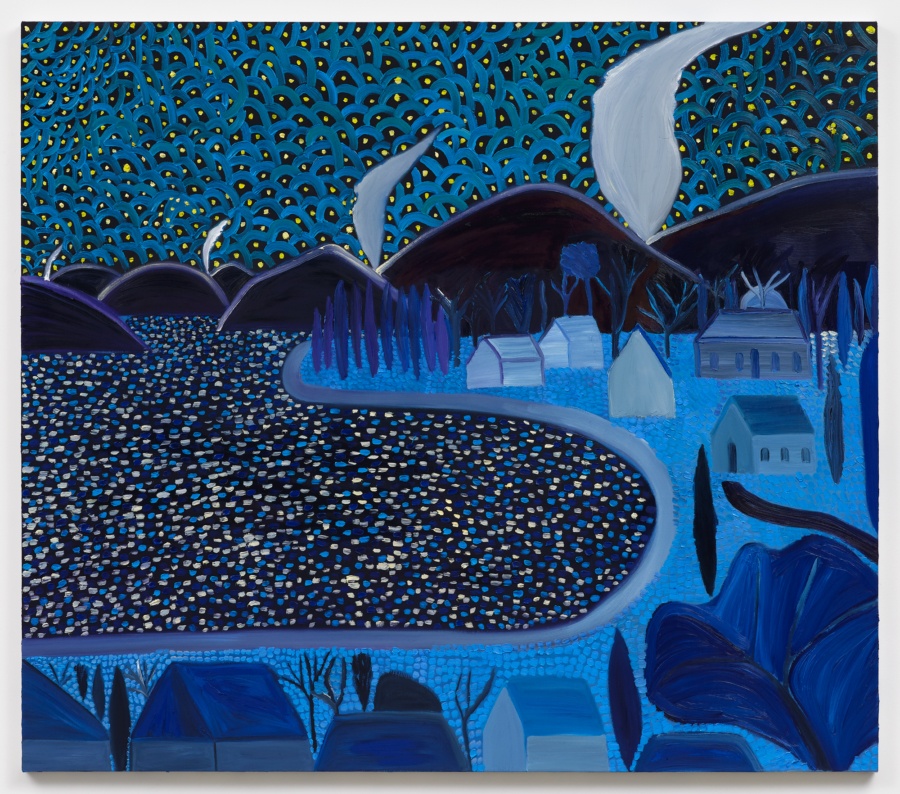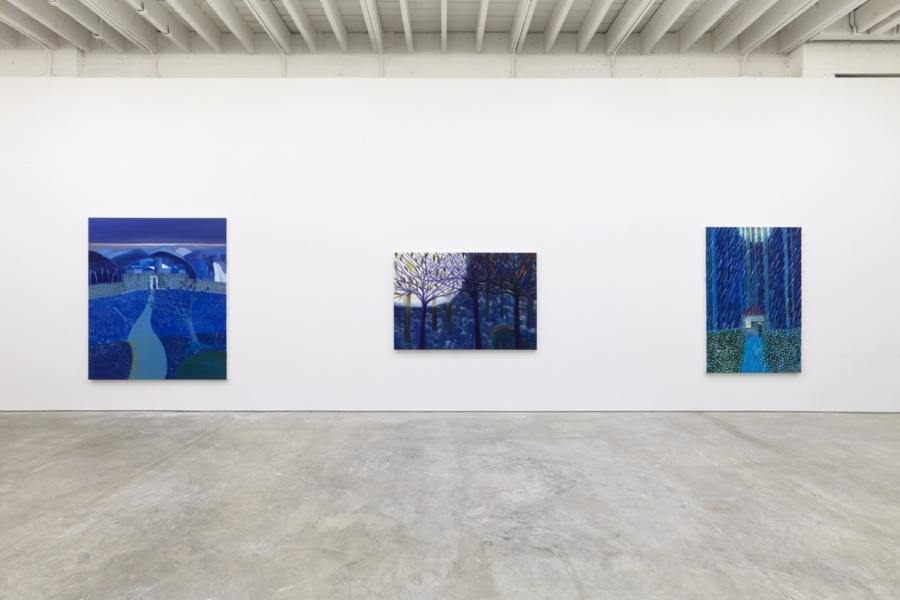March 23, 2020
Download as PDF
View on Border Crossings
Matthew Wong’s superb exhibition “Blue” opened at both KARMA gallery spaces in New York City in November 2019. The gallery showed framed gouaches on paper in the smaller space and oils on canvas in the larger. The Toronto-born, Edmonton-based artist had taken his own life in October of 2019, at the age of 35. A self-taught and fairly recent convert to painting, Wong, also a poet and photographer, had quickly acquired a masterfully direct and expressive ability with paint, possessed a strong and personal facility for colour, and created a style of composition and drawing that perfectly fit his lyrical tendencies as an artist. In “Blue,” Wong’s habitually intense, wistful tenderness towards depiction and storytelling characterizes the work, which conveys a powerfully emotional and subtly esoteric liminality. The effect of the show is without a doubt very sad, but the affect of the work is beyond ordinary sadness per se. Pain and turmoil have been sublimated through the atmosphere of the images, and although they manifest a darkness of mood, there is also a rippling, deep pleasure in the contemplation of the world and its objects, a sensuality that remains a stabilizing anchoring force. Much of the landscape depicted in the works is based on a real place—Sicily—seen on a trip with the artist’s mother, but the world we confront in the work scarcely seems to be our own. “Fantasy” is not a strong enough word to catch the drift of this production—it is a primal, blue phantasmagoria. Elements of Canadian post-impressionist landscape painting, European modern art, Chinese landscape art and more are all present in Wong’s artistic ancestry, but the sublime results of all this don’t closely resemble anything else at all.
Starry Night, 2019, oil on canvas, 60 × 70 inches
Wong’s stylization of the seen and embodied world does follow from a certain species of affectation, but it is one that combines significant visual sophistication with an almost childlike phenomenological credulity, marrying them, so that there is still a feeling of naturalism that abides in the most “naïvely” rendered passage or improbable figuration. Atmospheric space is compressed and flattened, as in fauvism or primitivism, but like the best instances of those styles, the eye senses the felt realness of the pictured world. This effect operates in the collision of incommensurate perspectives, where hallucinatory delusion proves true and the way things normally appear turns out to be provisional at best: nothing but an agreement the eyes make with the mind so as not to drive it insane. For example, in Path to the Sea, Wong includes his own silhouette seen from behind at the bottom of the picture plane, entering the landscape. The path before him leads to a seashore through darkened trees—but the location of the overlapping shapes implies that the horizon oval is actually a kind of spirit door, not placed in accurately recessive space, a threshold to eternity or annihilation. The painting almost whispers that those things may be the same, that it may make no difference if that is so. In A Dream, a pathway towards the horizon ends beneath a bright, low sun, flanked by blue groves. A simple composition resolves into what ought to be a calm regard of a pastoral landscape, but the painting refuses to yield its sense of luminosity and remains “dreamlike.”
Ontologically, the exhibition manifests an attitude toward the reality of positive spiritual expectation and total nihilistic isolation, paradoxical as that may be. Pervasive pain and sorrow and fraught spirituality are the given condition of the subject, but they are not the subject in itself, which is a poignant existential ambiguity. This ambiguity shows with a searing light; there is a certain awe and uncanniness in the paintings, a shifting sense of things, but very little dread is manifested. Even given the impossibility of detaching from the tragic, recent news of the artist’s loss, which is rending to confront in the gallery space, the question is not whether the works project more hope or hopelessness. This is also true of Wong’s titles; Unknown Pleasures, the title of another incantatory landscape with a pathway (to a magic pointy mountain), is a nod to the spellbinding English new wave punk band Joy Division, whose lead singer, Ian Curtis, committed suicide in 1980. Another magnificent painting is entitled Starry Night, no explanation needed.
Installation view, “Blue,” 2019-2020, Karma, New York
Like another great Canadian artist who named some of her best work “Blue,” Wong commits to a psychically charged, emotional romanticism. There is a confessional element in the work, but it is minor compared with its visionary qualities. Wong’s position on elemental reality doesn’t seek to edify or make claims but somewhat eerily suggests that symbolist, surrealist and expressionist art does have the power to illuminate the nature of things and provide truth. The paintings don’t depict or illustrate the spirit world—they are already in it, enact it, are it. They predict the next or the other world insofar as it can be visibly depicted overlapping with this one, our one, such as it is. It’s impossible to know if this prolepsis presents a deliberate accounting by the artist, in terms of his own beliefs—and yet it seems impossible that he didn’t understand that he was summoning that crossover, divining the invisible. It isn’t possible not to consider the piercing beauty of these works in light of the artist’s death, but it is independent of it—Wong’s art was the real thing. Vincent van Gogh wrote to his brother, Theo, that his aim was to express “not sentimental melancholy, but serious sorrow.” Matthew Wong did that in his too-brief time in this world. RIP Matthew.





